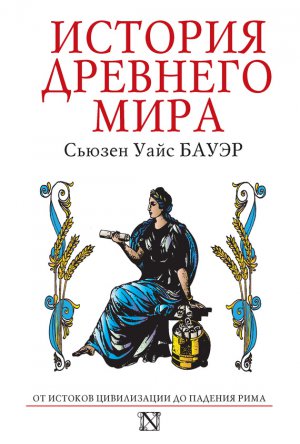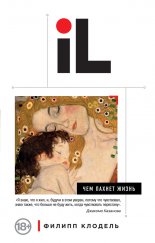»стори€ ƒревнего мира. ќт истоков ÷ивилизации до падени€ –има Ѕауэр —ьюзен

Л229Ы Robert S. Hardy, ЂThe Old Hittite Kingdom: A Political Historyї, American Journal of Semitic Languages and Literatures 58:2 (1941), p.†180.
Л230Ы Trevor Bryce, Life and Society in the Hittite World (2002), pp.†116Ц117.
Л231Ы G. G. Giorgadze, ЂThe Hittite Kingdomї, in Early Antiquity, ed. I. M. Diakanoff, trans. Alexander Kiijanov (1991), p.†271.
Л232Ы Bryce, p.†230.
Л233Ы Robert S. Hardy, p.†181.
Л234Ы Giorgadze, p.†272.
Л235Ы Robert S. Hardy, p.†194.
Л236Ы ’еттское Ђ«авещаниеї, более подробно см. в: Bryce, p.†11.
Л237Ы Bryce, p.†31.
Л238Ы Redford, Egypt, p.†134.
Л239Ы Leick, The Babylonians, p.†42.
Л240Ы Robert S. Hardy, p.†206.
Л241Ы Bryce, p.†107.
Л242Ы —легка перефразировано из: Steindorff and Steele, p.†31.
Л243Ы Silverman, p.†30.
Л244Ы Clayton, p.†102.
Л245Ы Josephus, Against Apion, 1.14.
Л246Ы Lewis, p.†98.
Л247Ы Shaw, p.†216.
Л248Ы Redford, Egypt, p.†129.
Л249Ы Eliezer D. Oren, ЂThe 'Kingdom of SharuhenТ and the Hyksos Kingdomї, in The Hyksos: New Historical and Archaeological Perspectives, ed. Eliezer D. Oren (1997), p.†253.
Л250Ы Lewis, p.†98.
Л251Ы Dodson and Hilton, p.†127.
Л252Ы Clayton, p.†105.
Л253Ы Edward F. Wente, ЂSome Graffiti from the Reign of Hatshepsutї, Journal of Near Eastern Studies 43:1 (1984), pp.†52Ц53.
¬енте указывает, что надписи на стенах могут иметь и дополнительные истолковани€.
Л254Ы ≈. P. Uphill, Ђј Joint Sed-Festival of Thutmose III and Queen Hatshepsutї, Journal of Near Eastern Studies 20:4 (1961), pp.†249Ц251.
Л255Ы I. V. Vinogradov, ЂThe New Kingdom of Egyptї, in Early Antiquity, ed. I. M. Diakonoff, trans. Alexander Kirjanov (1991), p.†178.
Л256Ы Ibid.
Л257Ы Ibid., p.†180.
Л258Ы Steindorff and Steele, p.†58.
Л259Ы Ibid., p.†57.
Л260Ы Laessoe, p.†83.
Л261Ы Ibid., p.†87.
Л262Ы Steindorff and Steele, p.†63.
Л263Ы Robert S. Hardy, p.†206.
Л264Ы Ibid., p.†208.
Л265Ы Bryce, pp.†28Ц29.
Л266Ы Laessoe, p.†89.
Л267Ы Redford, Egypt, p.†164.
Л268Ы Ibid., p.†167.
Л269Ы Alan R. Schulman, ЂDiplomatic Marriage in the Egyptian New Kingdomї, Journal of Near Eastern Studies 38:3 (1979), p.†83.
Л270Ы ChТien, p.†43.
Л271Ы Kwang-Chih Chang, Shang Civilization (1980), p.†11.
Л272Ы ChТien, p.†45.
Л273Ы Arthur Cotterell, China: A Cultural History (1988), p.†16.
Л274Ы Chang, p.†10.
Л275Ы Quoted in Chang, p.†11.
Л276Ы ChТien, p.†47.
Л277Ы Lord William Taylour, The Mycenaeans (1983), p.†18.
Л278Ы Plutarch, Plutarch's Lives, vol.†1, The Dryden Translation (2001), p.†10.
Л279Ы Taylour, p.†41.
Л280Ы Ibid., p.†147; Robert Morkot, The Penguin Historical Atlas of Ancient Greece (1996), p.†29.
Л281Ы Taylour, p.†137.
Л282Ы John Chadwick, Linear ¬ and Related Scripts (1987), pp.†44Ц49.
Л283Ы Herodotus, 3.122.
Л284Ы Taylour, p.†156.
Л285Ы Fitton, p.†179.
Л286Ы J. T. Hooker, ЂHomer and Late Minoan Creteї, Journal of Hellenic Studies 89 (1969), p.†60.
Л287Ы Clayton, p.†116.
Л288Ы David OТConnor and Eric H. Cline, Amenhotep III: Perspectives on His Reign (1998), p.†13.
Л289Ы Ibid., p.†11.
Л290Ы Tacitus, The Annals of Imperial Rome (1996), p.†111.
Л291Ы Details found in Ernest A. Wallis Budge, Tutankhamen: Amenism, Atenism, and Egyptian Monotheism (1923), p.†68, см. также: Clayton, p.†117.
Л292Ы Donald B. Redford, Akhenaten: The Heretic King (1984), pp.†36Ц37.
Л293Ы Clayton, p.†116.
Л294Ы OТConnor and Cline, p.†20.
Л295Ы Laessoe, p.†90.
Л296Ы OТConnor and Cline, p.†243.
Л297Ы William L. Moran, ed. and trans., The Amama Letters (1992), p.†1.
Л298Ы Ibid., pp.†1Ц2.
Л299Ы Ibid., p.†8.
Л300Ы OТConnor and Cline, pp.†2Ц3.
Л301Ы Redford, Akhenaten, p.†162.
Л302Ы Dodson and Hilton, p.†142.
Л303Ы Redford, Akhenaten, p.†52.
Л304Ы Cyril Aldred, Akhenaten, King of Egypt (1988), p.†278.
Л305Ы Ibid., pp.†241Ц243.
Л306Ы Redford, Akhenaten, p.†141.
Л307Ы ѕарафраз надписи из Ёль-јмарны (далее ≈ј), обозначенной археологами как 20-€, приведена в: Moran, p.†48.
Л308Ы Redford, Akhenaten, р 195.
Л309Ы ≈ј 41, in Moran, p.†114.
Л310Ы EA 16, in Moran, p.†16.
Л311Ы Redford, Akhenaten, p.†197.
Л312Ы Laessoe, p.†90.
Л313Ы EA 9, in Moran, p.†18.
Л314Ы Saggs, Babylonians, pp.†118Ц119.
Л315Ы Clayton, p.†134.
Л316Ы Nicholas Reeves, The Complete Tutankhamun: The King, The Tomb, The Royal Treasure (1995), p.†23.
Л317Ы Clayton, p.†135.
Л318Ы Clayton, p.†138.
Л319Ы Ibid., p.†146.
Л320Ы Bryce, p. in.
Л321Ы Shaw, p.†298.
Л322Ы Diakonoff, p.†189.
Л323Ы Shaw, p.†298.
Л324Ы Clayton, p.†151.
Л325Ы ѕисьмо переведено и процитировано у: Bryce, p.†172.
Л326Ы Luckenbill, Ancient Records, vol.†1, p.†27.10. Bryce, p.†108.
Л327Ы Luckenbill, Ancient Records, vol.†1, p.†40.
Л328Ы Redford, Egypt, p.†188.
Л329Ы Clayton, p.†153.
Л330Ы Ibid., p.†155.
Л331Ы Barbara W. Tuchman, The March of Folly: From Troy to Vietnam (1984), p.†43.1. Taylour, p.†159.
Л332Ы Homer, The Iliad, Book 3; this translation is E. V. RieuТs (1950).
Л333Ы Virgil, The Aeneid, 2.13Ц20, translated by C. Day Lewis (1950).
Л334Ы Ibid., 2265-267,327.
Л335Ы E. V. Rieu, ЂIntroductionї, in Homer, The Iliad (1950), p.†XIV.
Л336Ы Chadwick, p.†36.
Л337Ы Clayton, p.†162.
Л338Ы Herodotus, 1.4.
Л339Ы Herodotus, 1.5.
Л340Ы Ibid.
Л341Ы Thucydides, 1.11.1.
Л342Ы Homer, The Odyssey, Book 3, Samuel Butler translation (1898).
Л343Ы Thucydides, 1.12.2.
Л344Ы J. Legge and —. Waltham translation, quoted by Chang, p.†12.
Л345Ы Fairbank and Goldman, p.†34.
Л346Ы J.A.G. Roberts, p.†67.
Л347Ы Ibid., p.†8.
Л348Ы Chang, pp.†32Ц35.
Л349Ы A. Waley translation, quoted in Chang, p.†13.
Л350Ы Cotterell, China, p.†24.
Л351Ы Keay, p.†26.
Л352Ы Ranbir Vohra, The Making of India: A Historical Survey (2001), pp.†3Ц4.
Л353Ы Keay, p.†29. ћандола может также означать нечто округлое.
Л354Ы The Rig Veda, translated by Franklin Edgerton in The Beginnings of Indian Philosophy (1965), pp.†52Ц56.
Л355Ы Kulke and Rothermand, p.†35.
Л356Ы Thapar, Early India, p.†114.
Л357Ы Redfbrd, Egypt, p.†247.
Л358Ы Clayton, p.†157.
Л359Ы Bryce, p.†94.
Л360Ы Ibid., p.†22.
Л361Ы K. A. Kitchen, trans., Ramesside Inscriptions, Historical and Biographical, vol.†4 (1969), 5.3.
Л362Ы Bryce, p.†95.
Л363Ы Ibid., p.†109.
Л364Ы Ibid., p.†26.
Л365Ы Ibid., p.†234.
Л366Ы Redfbrd, Egypt, p.†245.
Л367Ы ѕеределано из надписи, обозначенной как RS 34, вз€той из: Sylvie Lackenbacher, Le rot bdtisseur. Les recks de construction assyriens des origins a Tegftitphalasar III (1982).
Л368Ы Itamar Singer, ЂNew Evidence on the End of the Hittite Empireї, in The Sea Peoples and Their World: A Reassessment, ed. Eliezer D. Oren (2000), p.†22.
Л369Ы Laessoe, p.†98.
Л370Ы Leick, Mesopotamia, p.†209.
Л371Ы Chronicle P, quoted in Saggs, Babylonians, p.†119.
Л372Ы Quoted in Roaf, p.†148.
Л373Ы Luckenbill, Ancient Records, vol.†1, p.†49.
Л374Ы Saggs, Assyria, p.†52.
Л375Ы Luckenbill, Ancient Records, vol.†1, p.†49.
Л376Ы Leick, Mesopotamia, p.†251.
Л377Ы Saggs, Babylonians, p.†120.
Л378Ы Ѕольшой папирус ’арриса[309], цит. по A. Malamat in ЂCushan Rishathaim and the Decline of the Near East around 1200 BCї Journal of Near Eastern Studies 13:4 (1954), p.†234.
Л379Ы Clayton, p.†160.
Л380Ы Ќесколько сжатый вариант из перевода Ћьюиса: Lewis, p.†219.
Л381Ы Jacobus van Dijk, ЂThe Amama Period and the Later New Kingdomї, in The Oxford History of Ancient Egypt, ed. Ian Shaw (2000), pp.†304Ц305.
Л382Ы Ќесколько сжатый вариант из перевода –едфорда: Redford, Egypt, p.†251.
Л383Ы Redford, Egypt, p.†252.
Л384Ы Lewis, p.†245.
Л385Ы David OТConnor, ЂThe Sea Peoples and the Egyptian Sourcesї, in The Sea Peoples and Their World: A Reassessment, ed. Eliezer D. Oren (2000), p.†95.
Л386Ы Ibid., p.†85.
Л387Ы Lewis, pp.†245Ц246.
Л388Ы van Dijk, p.†306.
Л389Ы Lewis, p.†247.
Л390Ы Ibid., p.†252.
Л391Ы Ibid., p.†254.
Л392Ы Clayton, p.†168.
Л393Ы See van Dijk, p.†308, а также: Lewis, p.†265.
Л394Ы Clayton, p.†171.
Л395Ы Taylour, p.†159.
Л396Ы Morkot, p.†46.
Л397Ы Herodotus, 5.76.
Л398Ы Konon, Narratives, Sec. 26, in The Narratives of Konon: Text Translation and Commentary of the Diegesis by Malcolm Brown (2003).
Л399Ы Thucydides, 1.12.2Ц4.
Л400Ы Taylour, p.†161.
Л401Ы E. Watson Williams, ЂThe End of an Epochї, Greece & Rome, 2d series, 9:2 (1962), pp.†119Ц120.
Л402Ы Philip P. Betancourt, ЂThe Aegean and the Origin of the Sea Peoplesї, in The Sea Peoples and Their World: A Reassessment, ed. Eliezer D. Oren (2000), p.†300.
Л403Ы Homer, The Iliad, 1.12Ц14, translated by Robert Fitzgerald (1974).
Л404Ы Williams, p.†117.
Л405Ы Quoted in Williams, p.†112.
Л406Ы Translated by Ќ. Otten in the journal Mitteilungen des deutschen Orientgesellschaft 94 (1963), p.†21, and quoted in Redford, Egypt, p.†254.
Л407Ы Roaf, p.†149.
Л408Ы A. T. Olmstead, ЂTiglath-Pileser I and His Warsї, Journal of the American Oriental Society, 37 (1917), p.†170.
Л409Ы J. N. Postgate, ЂThe Land of Assur and the Yoke of Assurї, World Archaeology 23:3 (1992), p.†255.
Л410Ы Luckenbill, Ancient Records, vol.†1, p.†83.
Л411Ы Olmstead, ЂTiglath-Pileser I and His Warsї, p.†186.
Л412Ы Leick, Mesopotamia, p.†212.
Л413Ы Olmstead, ЂTiglath-Pileser I and His Warsї, p.†180.
Л414Ы W. G. Lambert, ЂStudies in Mardukї, Bulletin of the School of Oriental and African Studies, University of London 47:1 (1984), p.†4.
Л415Ы Postgate, p.†249.
Л416Ы J. A. Brinkman, ЂForeign Relations of Babylonia from 1600 to 625 BC: The Documentary Evidenceї, American Journal of Archaeology 76:3 (1972), p.†276.
Л417Ы Quoted in Leick, Mesopotamia, p.†254.
Л418Ы J.A.G. Roberts, p.†10.
Л419Ы ChТien, p.†51.
Л420Ы Mencius, Mencius, translated by D. —. Lau (1970), p.†172.
Л421Ы Ibid., p.†26.
Л422Ы J.A.G. Roberts, p.†13.
Л423Ы Cotterell, China, p.†28.
Л424Ы Tsui Chi, A Short History of Chinese Civilisation (1942), p.†47.
Л425Ы ChТien, p.†64.
Л426Ы Cotterell, China, p.†42.
Л427Ы Claudio Cioffi-Revilla and David Lai, ЂWar and Politics in Ancient China, 2700 BC to 722 BC: Measurement and Comparative Analysisї./ottraa/ of Conflict Resolution 39:3 (1995), p.†473.






